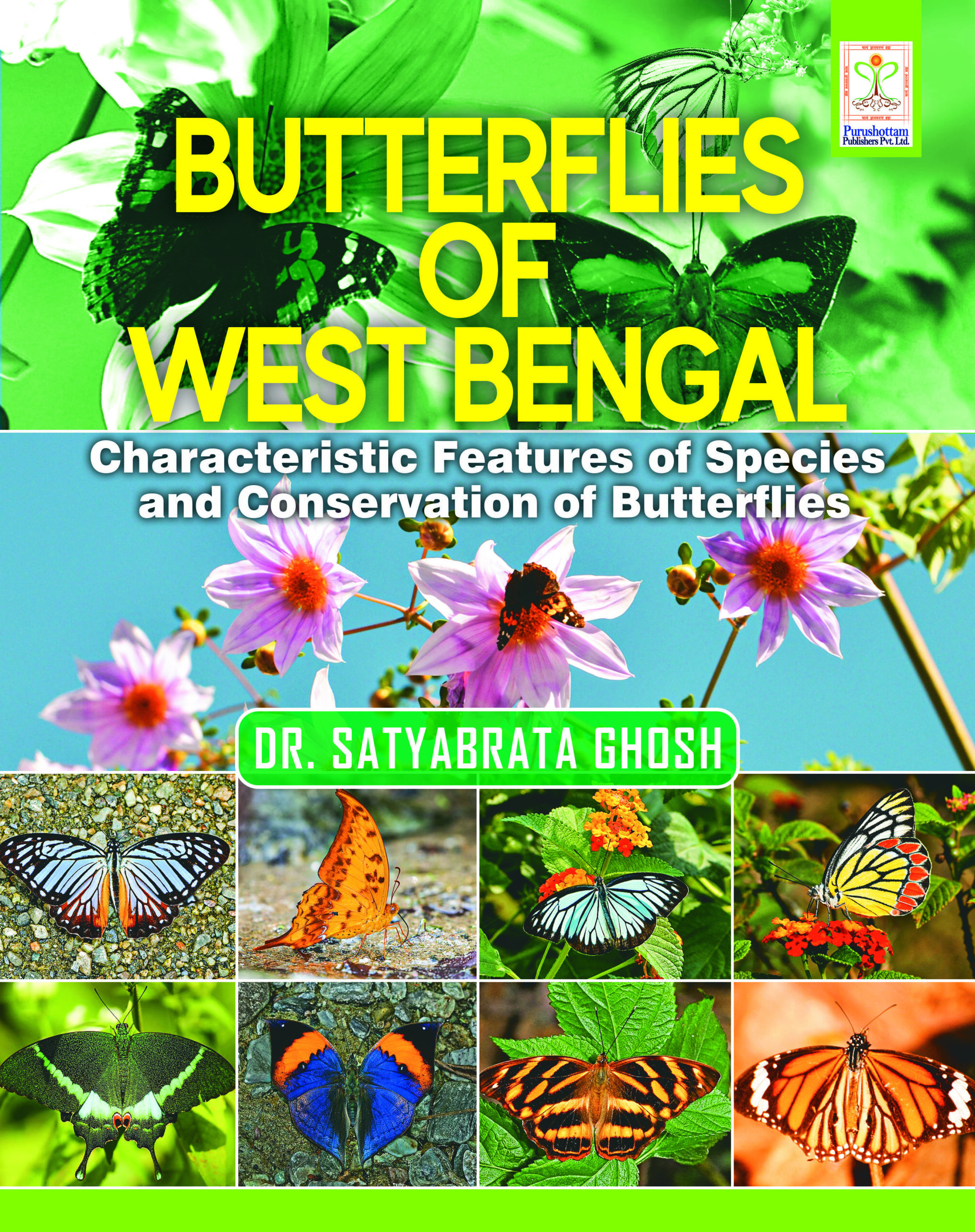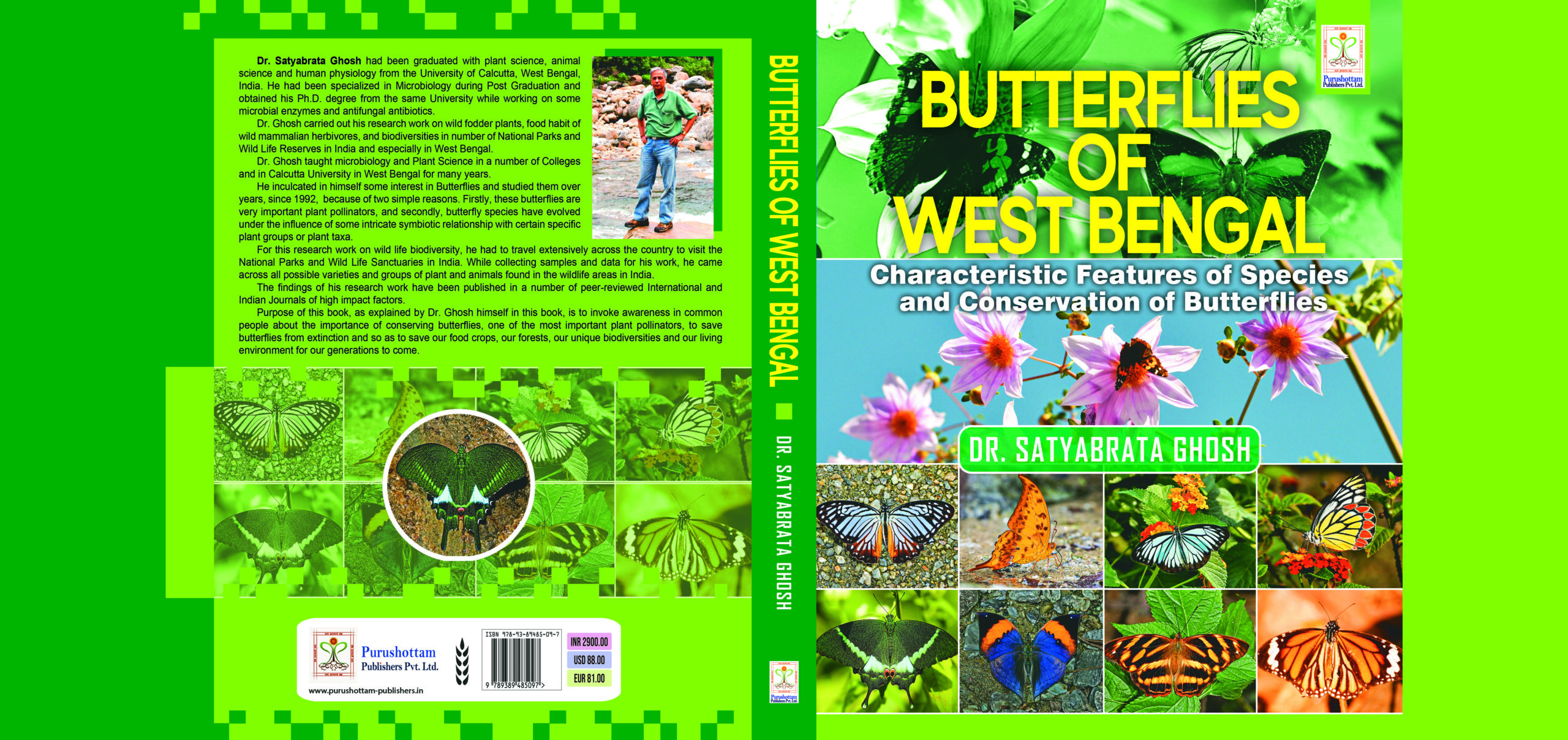| Weight | 1300 g |
|---|---|
| Dimensions | 8.26 × 11.69 × 0.86 in |
| ISBN | 978-93-89485-09-7 |
| YEAR OF PUBLISHING | 2024 |
| NAME OF THE PUBLISHERS | PURUSHOTTAM PUBLISHERS |
| BINDING | HARDBOUND |
| NO. OF PAGES | 376 |
| LANGUAGE | ENGLISH |
| COUNTRY | INDIA |
| DISPATCH WITHIN | 4-5 DAYS |
Butterflies of West Bengal
₹2,900.00 ₹2,639.00
Dr. Satyabrata Ghosh had been graduated with plant science, animal science and human physiology from the University of Calcutta, West Bengal, India. He had been specialized in Microbiology during Post Graduation and obtained his Ph.D. degree from the same University while working on some microbial enzymes and antifungal antibiotics. Dr. Ghosh carried out his research work on wild fodder plants, food habit of wild mammalian herbivores, and biodiversities in number of National Parks and Wild Life Reserves in India and especially in West Bengal. Dr. Ghosh taught microbiology and Plant Science in a number of Colleges and in Calcutta University in West Bengal for many years. He inculcated in himself some interest in Butterflies and studied them over years, since 1992, because of two simple reasons. Firstly, these butterflies are very important plant pollinators, and secondly, butterfly species have evolved under the influence of some intricate symbiotic relationship with certain specific plant groups or plant taxa. For this research work on wild life biodiversity, he had to travel extensively across the country to visit the National Parks and Wild Life Sanctuaries in India. While collecting samples and data for his work, he came across all possible varieties and groups of plant and animals found in the wildlife areas in India. The findings of his research work have been published in a number of peer-reviewed International and Indian Journals of high impact factors. Purpose of this book, as explained by Dr. Ghosh himself in this book, is to invoke awareness in common people about the importance of conserving butterflies, one of the most important plant pollinators, to save butterflies from extinction and so as to save our food crops, our forests, our unique biodiversities and our living environment for our generations to come.
In stock








Reviews
There are no reviews yet.